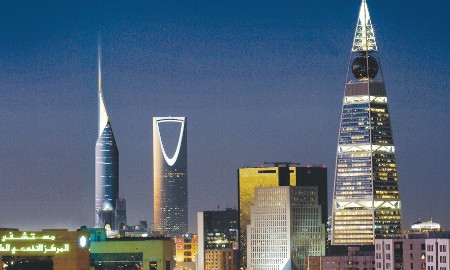Possessing around 20% of the world’s proven oil reserves, the Kingdom of Saudi Arabia is a leading member of the Organization of Petroleum Exporting Countries (OPEC), and a key player in global energy markets.
Ruled since its inception in 1932 by the House of Saud, it is a highly conservative country founded firmly on the principles of Islam.
Yet within its relatively short history, it has undergone a remarkable transformation.
Exploitation of its oil in partnership with international energy companies has brought Saudi Arabia prosperity and modernization.
Within seven decades it has changed from an undeveloped desert kingdom populated by scattered nomadic tribes into a highly urbanized society, and one of the world’s most rapidly developing, wealthiest nations.
Top 20 economy
Today the country is one of the world’s top 20 economies, the largest economy in the Middle East and North Africa (MENA) region, and the most influential of the Arabian Peninsular states both regionally and internationally. Saudi Arabia’s gross domestic product (GDP) is larger than the output of Bahrain, Kuwait, Oman, Qatar, and the United Arab Emirates combined.
Accelerated transformation
Far from being complete, the transformation of the kingdom is ongoing, and even speeding up. For, in order to secure its future, Saudi Arabia must provide jobs and homes for a rapidly expanding population. Most importantly, it must diversify its economic resources by expanding the industrial base of the kingdom to make its economy less reliant on a single commodity.
Fortunately, it has the wealth, stability and firm foundations on which to build.
At a time of global and regional uncertainty, Saudi Arabia has a robust and fast growing economy thanks to prudent, conservative economic and financial policies. And it has remained largely unaffected by the uprisings of the Arab Spring and the instability that has followed in other Arab countries.
Royal vision
King Abdullah bin Abdul Aziz Al-Saud, who succeeded to the throne in 2005, is also the Prime Minister of the Council of Ministers. Under his rule, Saudi Arabia has maximized its earnings from the oil sector to fund further growth. At the same time, a range of major economic, social, education, health, and infrastructure projects have been initiated.
The objective is to turn Saudi Arabia into a more diversified economic power within the next 20 years, while balancing calls for social and political liberalization with the kingdom’s traditionally conservative culture.
Municipal elections were held for the second time in 2011, and women have been granted the right to vote and run when they are next held, in 2015.
Private sector growth
By creating an increasingly deregulated and competitive economic environment, the government is fostering private sector-led growth.
Oil wealth is being channeled into a series of five-year development plans designed to build a modern industrial state. Billions of dollars are being poured into the construction of new economic cities, infrastructure-related projects, the expansion of human capital, and the development of knowledge-based, value-added industries.
The strategy is working. The private sector is playing an increasingly large role in the Saudi economy, and now accounts for 48% of GDP.
The non-oil sector of the economy is growing faster than the oil sector, with construction, transport and communications sectors expanding at double-digit rates.
“the most beneficial of all deeds is one that continues to bear fruit for generations to come.”
King Abdullah bin Abdul Aziz Al-Saud
Custodian of the Two Holy Mosques, King of Saudi Arabia, Prime Minister of the Council of Ministers, and Commander of the National Guard
|
Human capital investment
Resources are being allocated to develop Saudi Arabia’s potentially most valuable asset: its people. The population has soared from 6 million in 1970 to around 26.5 million today. More than 50% of Saudi citizens are under the age of 25, and there is a pressing need to provide them with jobs and housing.
At present, the Saudi economy is heavily dependent on the efforts and expertise of large numbers of foreign workers. Its future lies in the creation of a highly skilled indigenous workforce. This year’s budget – the latest and largest of a series of budgets aimed at stimulating the economy – focuses more strongly than ever on education, healthcare, and housing.
Opening up to foreign participation
Since becoming a member of the World Trade Organization (WTO) in 2005, Saudi Arabia has improved its regulatory regime, opening up to foreign investors in key sectors, such as banking and telecommunications.
It remains in first place in the Middle East in the latest World Bank’s Ease of Doing Business rankings – placed 22nd globally, ahead of the UAE in 26th place, and well ahead of other countries in the GCC region, such as Qatar, Bahrain, and Oman, ranked 40th, 42nd and 47th respectively.
The United States is one of Saudi Arabia’s largest trading partners and its biggest investor. Most of that investment is in the energy sector, but the kingdom’s drive to diversify the economy away from its hydrocarbon base offers a steady flow of growth opportunities.
In addition to its own rapidly expanding consumer market, Saudi Arabia is strategically placed, offering access beyond the Middle East and Africa to markets in the European Union, Eastern Europe, and the Commonwealth of Independent States, as well as to the South Asian subcontinent and the Asia-Pacific region.

0 COMMENTS